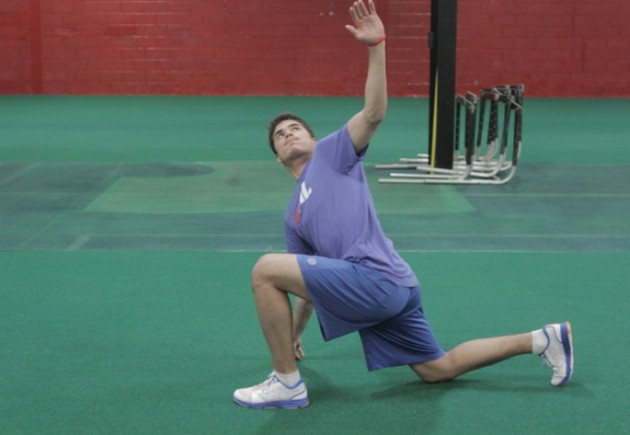
Stretching
Athletes are constantly working and using their muscles, which can get tight over time. To make matters worse, young athletes sit in class for hours at school. If they don’t actively try to improve their flexibility, virtually all aspects of their performance may suffer, including strength, speed, exercise form, skill technique and durability.
Everyone is different. Some athletes might have tight hip flexors, chest muscles or hamstrings. It’s up to you to monitor your tight areas and address them as needed. Try to be proactive by regularly incorporating these three types of stretches into your regular stretching routine.
Dynamic Warm-Up
A dynamic warm-up isn’t necessarily about increasing flexibility. It focuses instead on preparing the body for a workout or competition. It does this by taking the joints through their full range of motion with exercises that mimic athletic movements. The goals are to improve mobility, activate the muscles, elevate your heart rate and prepare you to perform your best at the start of a workout or game.
A dynamic warm-up should be done before any intense physical activity. Try this dynamic warm-up before your next workout, practice or game.
Static Stretching
Static stretching involves holding an elongated muscle position for a specified time. This is the type of stretching that people are most familiar with. It’s best for improving individual muscle flexibility, reducing tightness and increasing overall mobility.
You should static stretch after your workout as a form of recovery. Static stretching before a workout can reduce strength and actually cause injury since your muscles aren’t warm. Select a muscle group and hold the stretch for at least 30 seconds. Remember, it should be slightly uncomfortable but never painful.
PNF Stretching
This is an advanced type of stretching that originated in the rehab setting but is making its way into weight rooms. It’s similar to static stretching, but you stretch a muscle for 20 seconds, then contract it against your hand, a partner or a band for 10 seconds. This tricks your natural protection mechanisms into allowing a deeper stretch.
Try this method after a workout in place of static stretching. It offers similar results, but may be more effective at increasing muscle flexibility.
Read more articles from our Stretching section.
Check out our Physiotheraphy section, every Monday a new story! Tomorrow read about Sprained, swollen and turned ankle